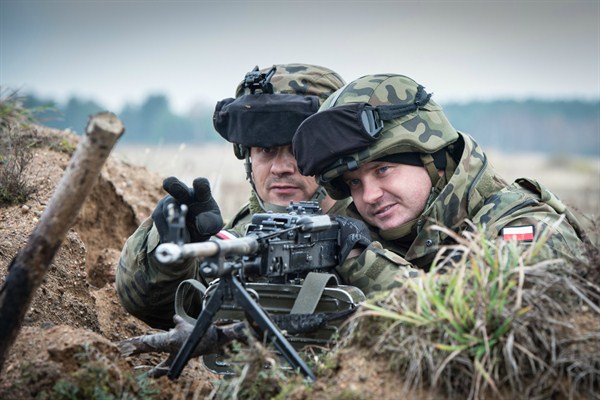Ironically for Poland, World War II—a conflict that officially started in order to defend Polish sovereignty and territorial integrity—resulted in the country ceasing to exist as an independent state and military actor. During the Cold War, the Polish People’s Republic military, which was the second-strongest member of the Warsaw Pact after the Soviet Union, primarily served Moscow’s plans, rather than Polish national interests. Formed with little divergence from Soviet vision and doctrine, it was large, with over 400,000 troops in peacetime; heavy, with over 7,000 tanks and armored vehicles; hierarchical; and devoid of indigenous strategic guidance.
The fall of the Iron Curtain brought independence to Poland, but also a rather misguided idea about the “end of history.” Poland’s security policy through the 1990s was dominated by an ambition to join NATO and the European Union, seen as the ultimate solution to the country’s security deficit. But after Poland joined both organizations, in 1999 and 2004, respectively, the global security environment evolved dramatically. The decade after 9/11, in particular, was marked by a belief that new threats like terrorism had to be tackled in places where they emerge.
As a NATO and EU member, therefore, between 2003 and 2014, Poland rotated over 30,000 troops to expeditionary missions, mainly in Iraq and Afghanistan. It is important to stress that those deployments were not a response to any sort of direct terrorist threat to Poland. While some Polish politicians and military leaders parroted the U.S. security line, in reality, Poland’s role in the so-called war on terror was undertaken primarily to invest in allied solidarity—most of all with the United States. The return on that investment was expected to come in the form of security guarantees against possible threats from an increasingly aggressive Russia.

